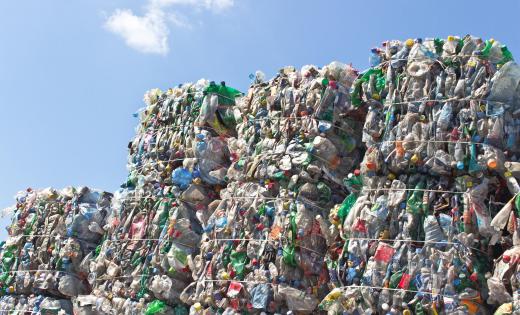A plastic compactor is a machine used to compress plastic materials into a large bale for storage or shipping purposes. This machine can vary in design, but generally, it will feature some sort of hopper or container into which plastic can be loaded, as well as one or more hydraulic arms that will compress that plastic into one large bale. Once the bale is created, another arm or system will be used to remove the bale from the container, as the bale is likely to be quite heavy.
Some machines do not create bales; instead, they may create bricks of plastic that can be cut, either by hand or by the machine, into preset lengths. This allows for easy stacking or storage, as well as easier handling. The plastic compactor may also heat the plastic while it is in the chamber to essentially melt the plastic into the desired shape. This can reduce or eliminate the need for a hydraulic arm for pressing materials, though some plastic compactor models will use a combination of the hydraulic arms and heating elements to create the plastic bricks. Some machines will feature a conveyor on which materials can be loaded; the machine can then load the plastics at a steady rate into the container or hopper.

Recycling processing plants commonly use plastic compactor machines to compress various plastic materials into bricks or bales for shipping, storing, or for moving to the next phase of the recycling process. In some cases, the plastic is loaded into the compactor and forced into brick form, which essentially ends the recycling process. The raw material can then be sold to manufacturers or otherwise used for fueling purposes or other manufacturing purposes. The size of the machine will usually dictate how much material can be processed at one time, and a recycling plant is likely to feature more than one plastic compactor to improve productivity.
While many compactors do not require any additional support once the materials are baled, some compactors will require a user to install baling wire to the finished bale to prevent materials from breaking off or separating. Some machines feature automated baling wire functions that will attach the wire to the bale automatically, but in other cases, an operator will have to perform this function by hand before the bale can be removed from the plastic compactor and transported to a storage location.
